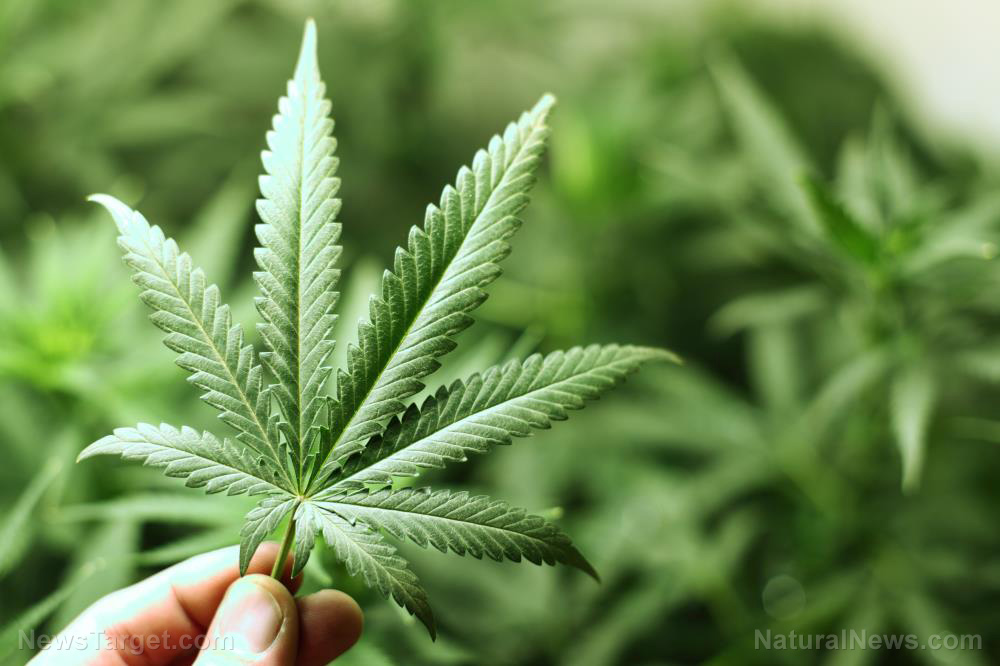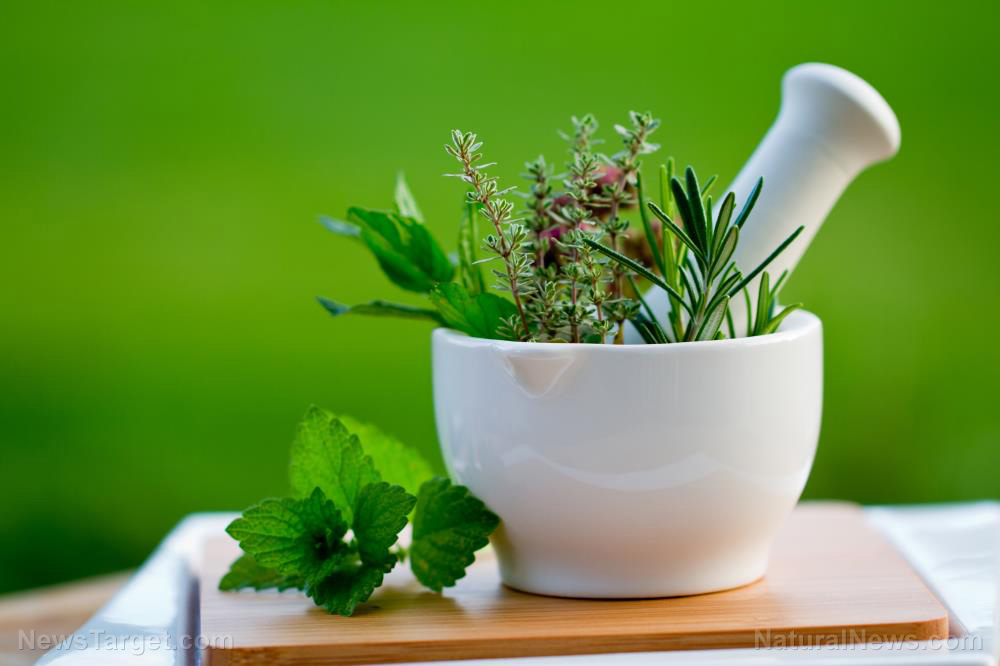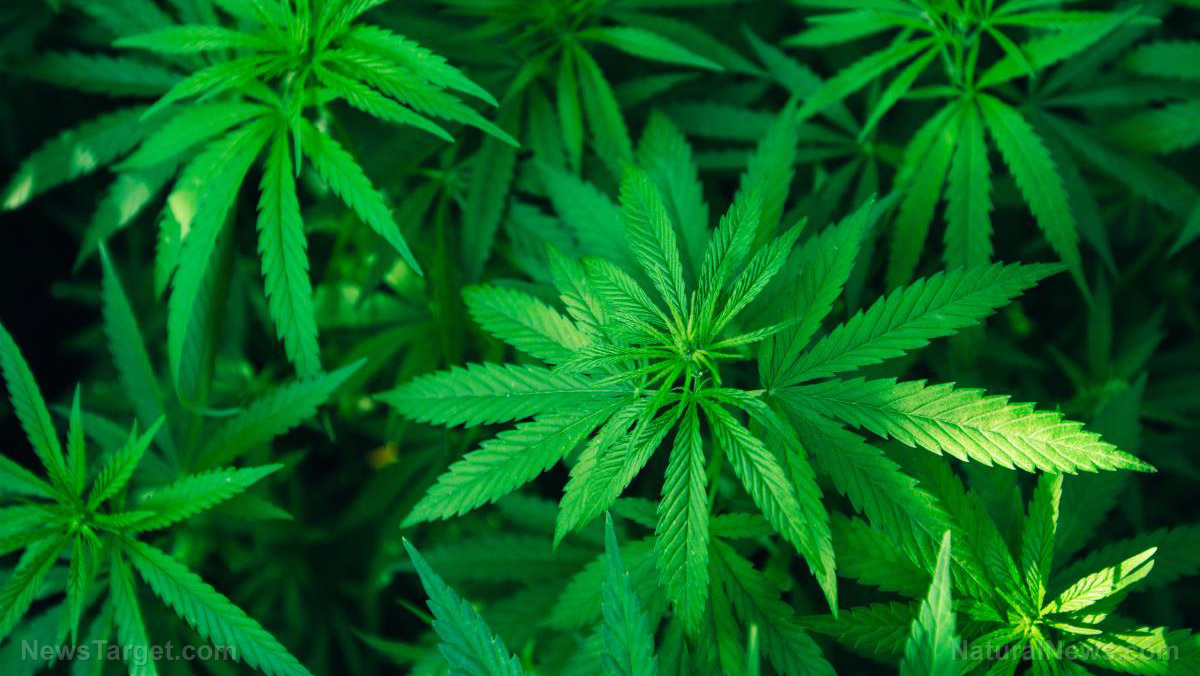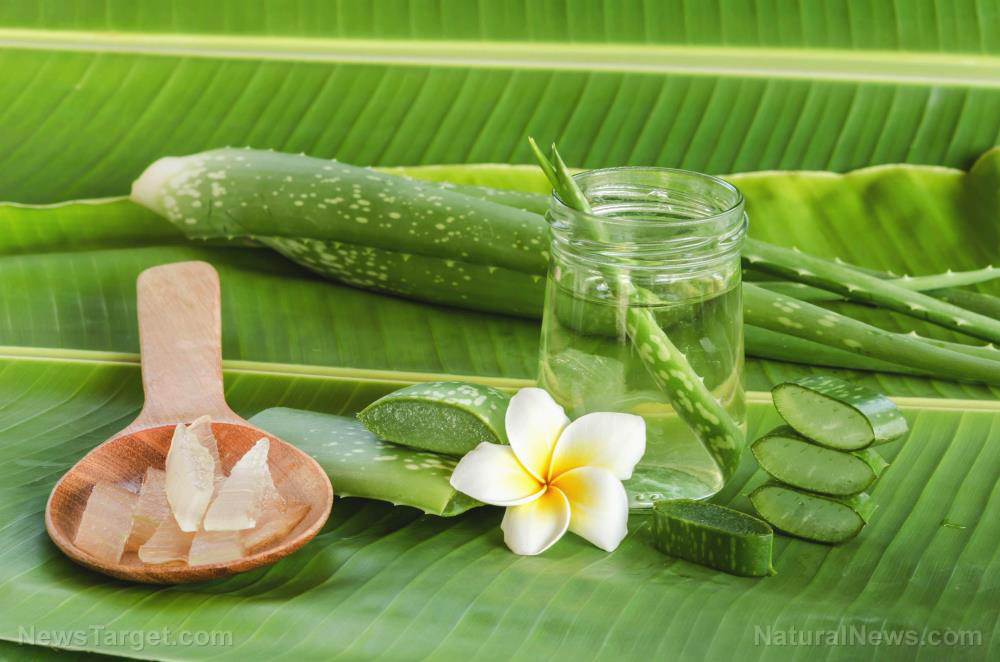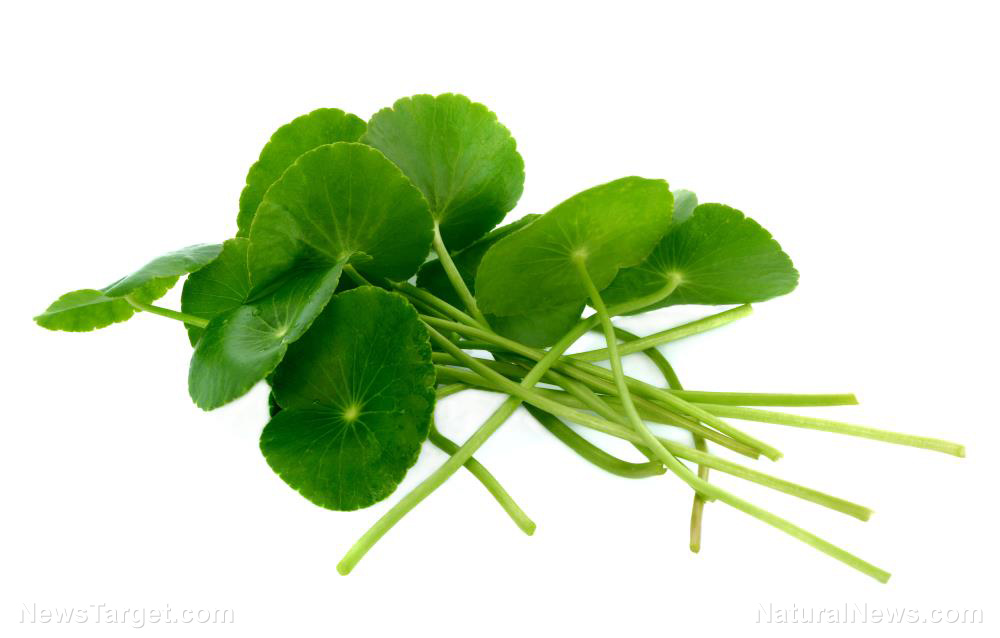If a natural cure for coronavirus is ever proven, this Chinese Medicine herb is likely to be the one (and no, we don’t sell it)
03/17/2020 / By Mike Adams

News is breaking all over the world that chloroquine, a prescription medication used to treat malaria, also appears to be effective against the coronavirus. According to local news KFOR.com, the Oklahoma Medical Research Foundation is advocating testing of the drug against COVID-19, the disease caused by the Wuhan coronavirus. From the KFOR.com website:
James explained that repurposing existing medications is often the fastest path to treating those infected by the virus in a novel way.
“That would be really exciting, because it’s a drug that already has FDA approval, and it is readily available,” she said. “If it works, it might treat COVID-19 almost instantly.”
Wider studies are now underway to confirm the results.
Chloroquine is best known as a malaria treatment, and it seems very likely to be helpful in preventing coronavirus infections. But what about natural molecules from herbs that might offer the same promise against both malaria and coronavirus?
Here’s a promising candidate herb that prevents malaria and tuberculosis
In the world of natural medicine, there are already powerful, well-known treatments against malaria that also happen to prevent tuberculosis, an aggressive infection of the respiratory tract. While nothing is yet proven to treat coronavirus, our review of herbal medicine studies and medicinal phytochemicals leads us to the conclusion that this Chinese Medicine herb may one day become known as the “natural cure” for coronavirus (although clinical trials are needed, obviously, to prove this).
The chemical is called artemesinin, and the herb is known as sweet wormwood. And no, we don’t sell it. This isn’t a commercial promotion, it’s an effort to help save millions of lives using medicine that’s available right now, all around the world.
Artemesinin is known for its ability to block the bacterial strain that causes tuberculosis, known as Mycobacterium tuberculosis. That doesn’t mean it prevents coronavirus, which is a viral infection, but it’s a strong candidate for a number of logical reasons.
According to research published in the journal Phytomedicine, artemisinin / sweet wormwood has a “100% cure rate” for treating drug-resistant malaria, at least in a small trial involving 18 patients (all of whom were cured). As Herbs.news writes in this important story:
A study led by Pamela Weathers, a professor of biology and biotechnology at the Worcester Polytechnic Institute (WPI), published in the journal Phytomedicine, describes how the Artemisia annua plant, commonly known as sweet wormwood or sweet annie, saved 18 patients with drug-resistant malaria from the brink of death.
The Congolese patients, who ranged in age from 14 months to 60 years, had all developed severe, untreatable malaria, with symptoms ranging from loss of consciousness, to trouble breathing and convulsions, among others. When they failed to respond to intravenous treatment with an ACT, compassionate doctors decided to try the dried leaves of the Artemisia annua plant as a last resort. After only five days of the treatment, all 18 patients were fully recovered, including one child who had been in a coma. Blood tests revealed that absolutely no parasites remained in their blood.
That study was published in Phytomedicine, and the full study is available at this link on ScienceDirect.com. The title of the study is, “Artemisia annua dried leaf tablets treated malaria resistant to ACT and i.v. artesunate: Case reports.”
There’s even more scientific evidence to back this up. Natural News covered another story about sweet wormwood herb in 2017, entitled, “Chinese medicine herb discovered to prevent tuberculosis infections.” The story cites a study published in Nature Chemical Biology in 2011.
Here’s part of that story:
Chinese medicine herb discovered to prevent tuberculosis infections
A recent study reveals that artemisinin, a compound found in sweet wormwood, shows potential in tuberculosis treatment. This Chinese herbal medicine is previously known for its efficacy in treating malaria. Researchers at the Michigan State University have discovered that the compound prevents Mycobacterium tuberculosis, a tuberculosis-causing bacteria, from becoming dormant. Dormancy was associated with antibiotic resistance in patients.
Lead researcher Dr. Robert Abramovitch explains that dormant bacteria become highly tolerant to antibiotic therapy. Inhibiting dormancy makes the tuberculosis bacteria more susceptible to drug treatments and shortens treatment duration. To test this, researchers engineered a tuberculosis strain that glows bright green upon the onset of dormancy. A vast number of compounds were then assessed to see if they could prevent the bacteria from becoming dormant.
According to the researchers, Mycobacterium tuberculosis or Mtb requires oxygen to thrive. Artemisinin is shown to inhibit the molecule called heme found in the bacterium’s oxygen sensor, which in turn disrupts the Mtb from sensing its deteriorating oxygen levels. “When the Mtb is starved of oxygen, it goes into a dormant state, which protects it from the stress of low-oxygen environments. If Mtb can’t sense low oxygen, then it can’t become dormant and will die,” Dr. Abramovitch says. The researchers have also identified five other compounds that may potentially replicate a similar effect on the bacterium.
A 2011 study also supports artemisinin’s anti-tuberculosis potential. Researchers said using the compound as a conjugation factor induces a selective antagonistic effect against multi- and extensively drug-resistant strains of Mtb. The findings are published in the Journal of the American Chemical Society.
###
More published studies and papers discuss artemisinin as a complementary treatment against malaria or tuberculosis
The author of the paper mentioned above, Robert Abramovitch, is also a co-author of a 2016 paper, published in Nature Chemical Biology, which explores the ability of artemesinin to treat tuberculosis, a respiratory illness. This paper is entitled, “Inhibitors of Mycobacterium tuberculosis DosRST signaling and persistence.” It says: (bolding added)
The Mycobacterium tuberculosis (Mtb) DosRST two-component regulatory system promotes the survival of Mtb during non-replicating persistence (NRP)… The screen discovered novel inhibitors of the DosRST regulon, including three compounds that were subject to follow-up studies: artemisinin, HC102A and HC103A. Under hypoxia, all three compounds inhibit Mtb-persistence-associated physiological processes, including triacylglycerol synthesis, survival and antibiotic tolerance. Artemisinin functions by disabling the heme-based DosS and DosT sensor kinases by oxidizing ferrous heme and generating heme–artemisinin adducts.
In addition, the journal Nature Reviews Microbiology also discusses the use of artemisinin as a therapy against malaria. In this article by Richard. T. Eastman and David A. Fidock, it’s explained that artemisinin is now used across the world because malaria has become resistant to the prescription drugs chloroquine and sulfadoxine–pyrimethamine. From their summary:
Drug resistance, however, remains the biggest threat to current drug efficacy. The former mainstays of antimalarial chemotherapy, chloroquine and sulfadoxine–pyrimethamine, have been rendered ineffective for the treatment of Plasmodium falciparum malaria by the emergence and spread of drug-resistant parasites.
Almost all malaria-endemic regions have switched to artemisinin (ART)-based combination therapies (ACTs) for the first-line treatment of P. falciparum malaria.
The term “ACTs” means artemisinin-based combination therapies.
We caution that artemesinin is not proven to treat or cure coronavirus, but so far, nothing else is either
The upshot of all this is that artemisinin is a promising candidate that might one day be known as the “natural cure” for coronavirus. However, since nearly every government and science body in the world is run by Big Pharma and the vaccine industry, it’s almost certain that this herb will never be tested against coronavirus. The natural cures are, of course, systematically suppressed.
Fortunately, this herb is widely available right now, and it works with a very high margin of safety, efficacy and affordability. That’s precisely why the pharmaceutical industry doesn’t want you to know about it, of course: There’s not much money to be made in affordable natural cures.
Yet this is how we can best serve humanity: Find the natural cures that exist right now, test them and disseminate the information as widely as possible. But Big Tech is making sure that all voices that promote natural cures are censored, thereby protecting Big Pharma’s profit interests. The DOJ has even announced it’s going to conduct criminal investigations into “false cures” being promoted for the coronavirus, which of course means they will specifically target anyone selling herbs, colloidal silver, chlorine dioxide and so on.
It’s all a grand racket to keep the people isolated from real knowledge while protecting the profits of the corrupt pharmaceutical industry that already kills 200,000+ Americans a year. In fact, so far this year, Big Pharma has killed far more people than the coronavirus, at least for the moment.
While I can’t tell you what to do with your own personal health strategy, I encourage you to discuss artemisinin with your naturopathic physician to determine if it’s a good fit. Personally, I’m stocking up on this herb and will start taking a preventive dose immediately. Should I begin to show any symptoms of respiratory distress or fever, I’ll up my daily dose of this along with a wide assortment of other vitamins, herbs, minerals and superfoods that might also be effective.
Rest assured, the corrupt establishment will make sure that sweet wormwood never gets tested against the coronavirus. That’s how they can say, in perpetuity, there’s “no evidence” that it works. There’s no evidence because they refuse to test it, just like the CDC managed to claim coronavirus infections were “low” in America because they deliberately botched the testing kits.
It’s amazing what the corrupt establishment can achieve by avoiding testing the things they don’t want to test, isn’t it?
Read Pandemic.news if you want to stay alive.
Submit a correction >>
Tagged Under:
artemisinin, coronavirus, Cures, Herbs, infections, natural cures, natural medicine, Naturopathy, outbreak, pandemic, prevention, remedies, sweet wormwood
This article may contain statements that reflect the opinion of the author
RECENT NEWS & ARTICLES
PlantMedicine.News is a fact-based public education website published by Plant Medicine News Features, LLC.
All content copyright © 2018 by Plant Medicine News Features, LLC.
Contact Us with Tips or Corrections
All trademarks, registered trademarks and servicemarks mentioned on this site are the property of their respective owners.

